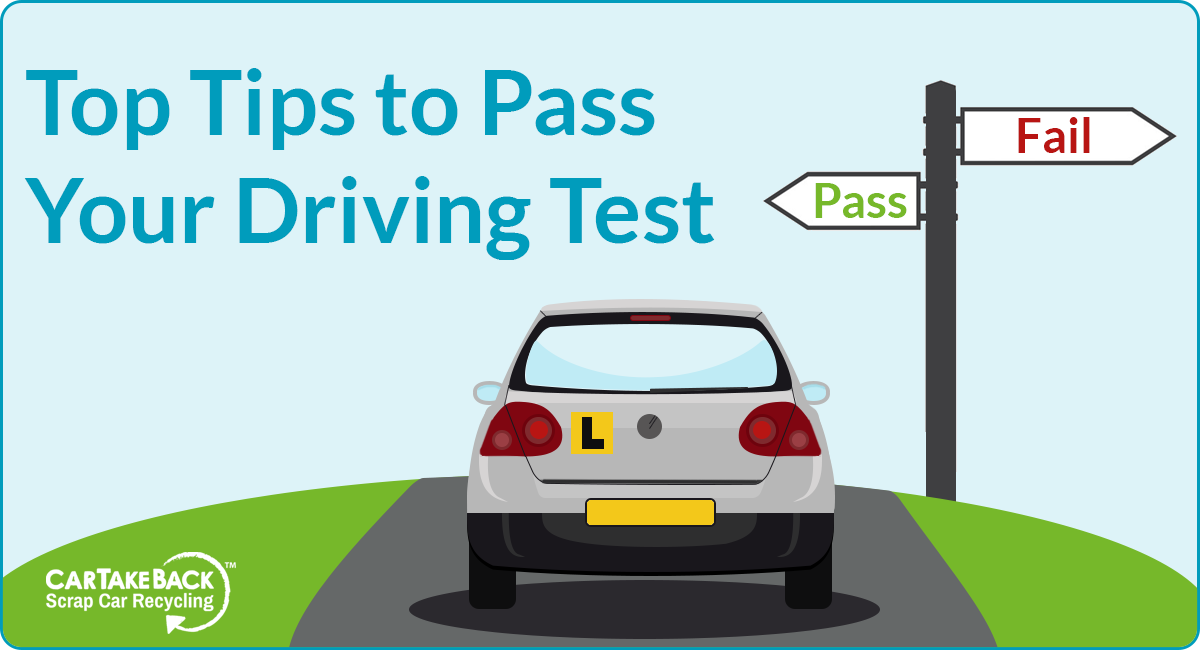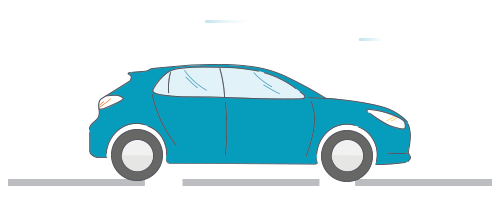To help as many of you as possible pass first time, we’ve identified 10 top reasons for failing, so you can be prepared for those tricky scenarios.
Here’s what learner drivers can do to make sure they don’t make common mistakes and to ensure they pass their driving test with flying colours!

How to make sure you don’t make this mistake: Whenever and wherever you move your vehicle you must perform a head check. The old learner driver mantra of “mirror – signal – manoeuvre” will ensure you don’t make a mistake here! Literally every merge, turn, change of lanes, parking or turning manoeuvre requires you to make full observations to pass your test so do those head checks and make it obvious you have!

Advice for avoiding this typical learner driver error: Leaner drivers often struggle to judge the speed of oncoming vehicles over distance and their hesitation can make the resulting manoeuvre unsafe. Our advice is to ensure you’ve had plenty of practice entering traffic, so you can feel confident in your ability by the time it comes to your test. Always take the time to ensure you are giving way to vehicles or pedestrians that have priority, and once you’ve decided it’s safe to proceed act promptly – driving confidently to join traffic smoothly and at the correct speed.

Ensuring you don’t make this common error: Be mindful of road markings, which will help you stay in the centre of the lane and on unmarked roads stay aware of your distance to the edge of the road. Key to driving considerately is simply to remember there are other people using the road and taking a different route to you! While you should keep to the centre when driving on a single straight road, ensure that when you approach a turn or junction that you position your car to the relevant side of the road.

Simple advice to avoid this driving mistake: Keep your focus as you’re approaching any traffic lights. If they’ve been green for a long time you can anticipate that they may well change and don’t take any risks or accelerate through a light change. When you are pulled up at a red light don’t lose your concentration and be ready for a smooth set-off.

A tip to ensure you don’t receive a fault on your test: After all the hours you will have driven by this point, you should be well practised at this, but remember to keep both hands on the wheel – preferably at the ‘9 to 3’ position (advice used to be ‘10 to 2’ but the adjustment has been made for safe air bag deployment). Whenever you make a turn, be sure you use the push and pull method to feed the wheel firmly through your hands back into position rather than letting it spin.

How to ensure you pass this part of your test: This one may seem obvious, but many learner drivers slow down at stop signs without actually coming to a complete stop. Quite simply, if you fail to stop properly, you will fail your test. So this is an easy one to get right – just follow what the sign tells you! You must stop your whole vehicle, completely and behind the line at every stop sign. If you can not see beyond obstructions to pull off safely, you are allowed to move forward at an intersection, but only after having come to a complete stop first.

Making sure you don’t tot up multiple minor faults: Go back to your theory knowledge and ensure you know what all road signs and markings mean so you can identify them swiftly and confidently. When you see a sign, react in plenty of time and in a safe manner. Similarly for road markings, ensure you read the road ahead. Lines on a road, including those at crossings and intersections, or the dashed and continuous lines separating lanes, are all used to indicate required driving behaviour and avoid illegal manoeuvres, so it’s essential you look out for any introductions or changes in road markings and drive accordingly.

Obvious but necessary advice for passing your test: It’s essential to indicate your intentions before any driving manoeuvre including changing lanes, diverging, pulling on or off a kerb and exiting a roundabout. But even if you remember to make all those signals, it’s the timing that’s key, as doing so too early or too late can confuse other drivers. The formal recommendation for leaving a kerb or a parked position is a five second signal, and for other manoeuvres you need to consider what action and timing will be clear to signal your intention. For example, don’t mislead other drivers by putting on your indicator if you are going to pass a turning before the one you intend to take. Also, be sure to cancel your signals once you’ve completed your manoeuvre, as they don’t always switch off automatically.

Advice for avoiding this typical learner driver error: While it’s important to drive confidently, that mustn’t translate to speeding. Simply pay attention to speed limits throughout your test as they are likely to change throughout (you may well know the area where you are going to be tested and can familiarise yourself with the local speed limits in advance). Pay extra attention to driving conditions on the day and additional hazards that might require you to reduce your speed.
A common mistake of learner drivers is a failure to notice or respond to school zones where speed limits are reduced (usually to 40km/h) or road works. These zones are always clearly signposted, so ensure you pay attention to the signs around you and familiarise yourself with the timings that these zones are active in advance of your test.

How to avoid a critical fault on your driving test: While it’s difficult in a test scenario, try to stay calm. Stalling the car doesn’t necessarily lead to a fault as long as you can re-start the car swiftly and safely. Re-set yourself and the car! Re-start the manoeuvre calmly and don’t forget to do all the necessary checks to be sure it’s safe before moving off.

Remember, stay calm and confident – you’ve already spent a lot of time on the road – you can do this!
If you are reading this on behalf of a learner driver, or it’s just a long time since you passed your test, you might like to read our blog on What Makes a Good Driver and see if you need to review your own driving skills! There is also a lot of useful information on the NHTSA website about how to help teenage drivers.
If you learnt to drive in an old clunker and it’s time to get a new motor, find our how much your learner wheels are worth with our instant quote service.




